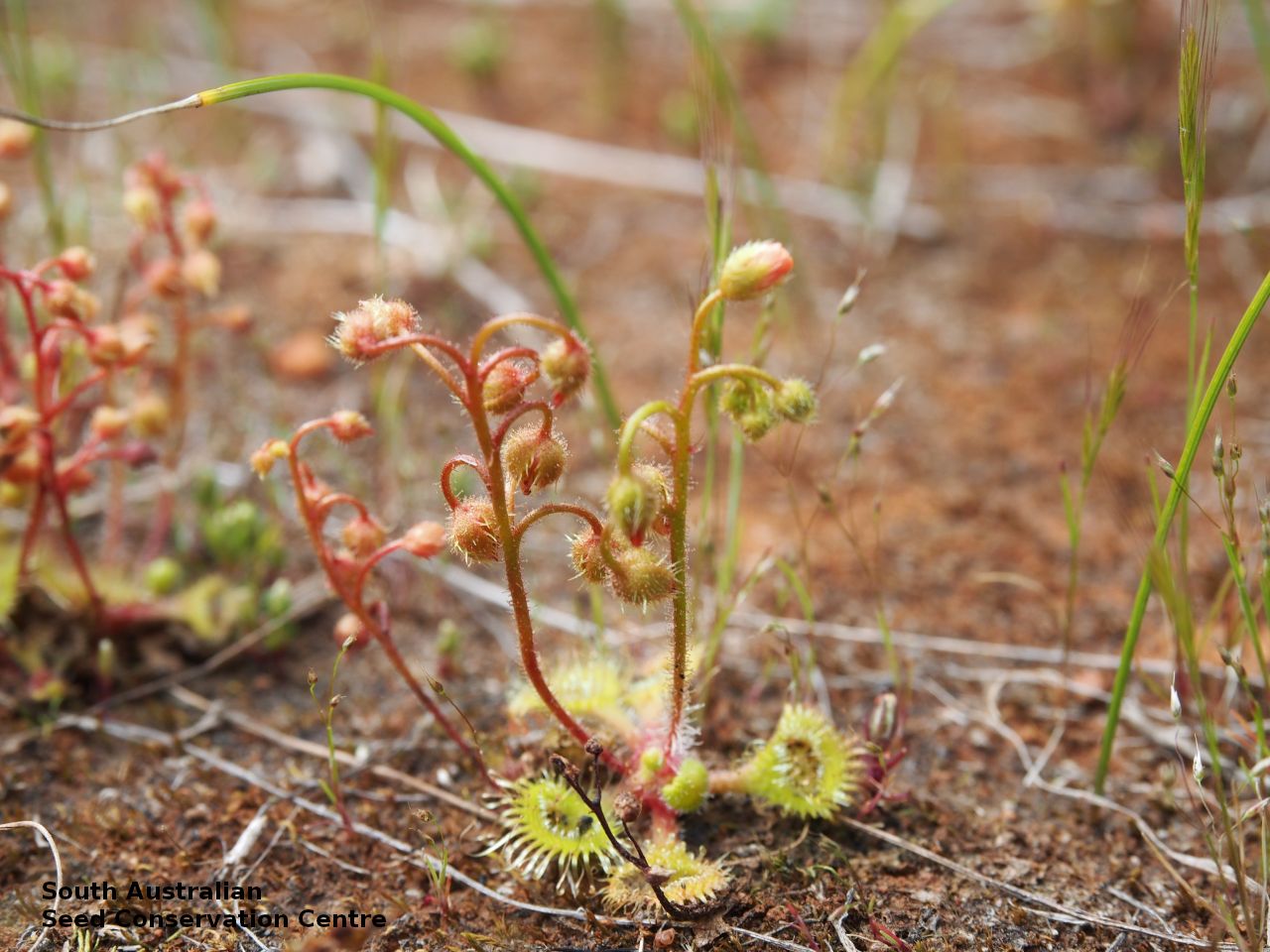
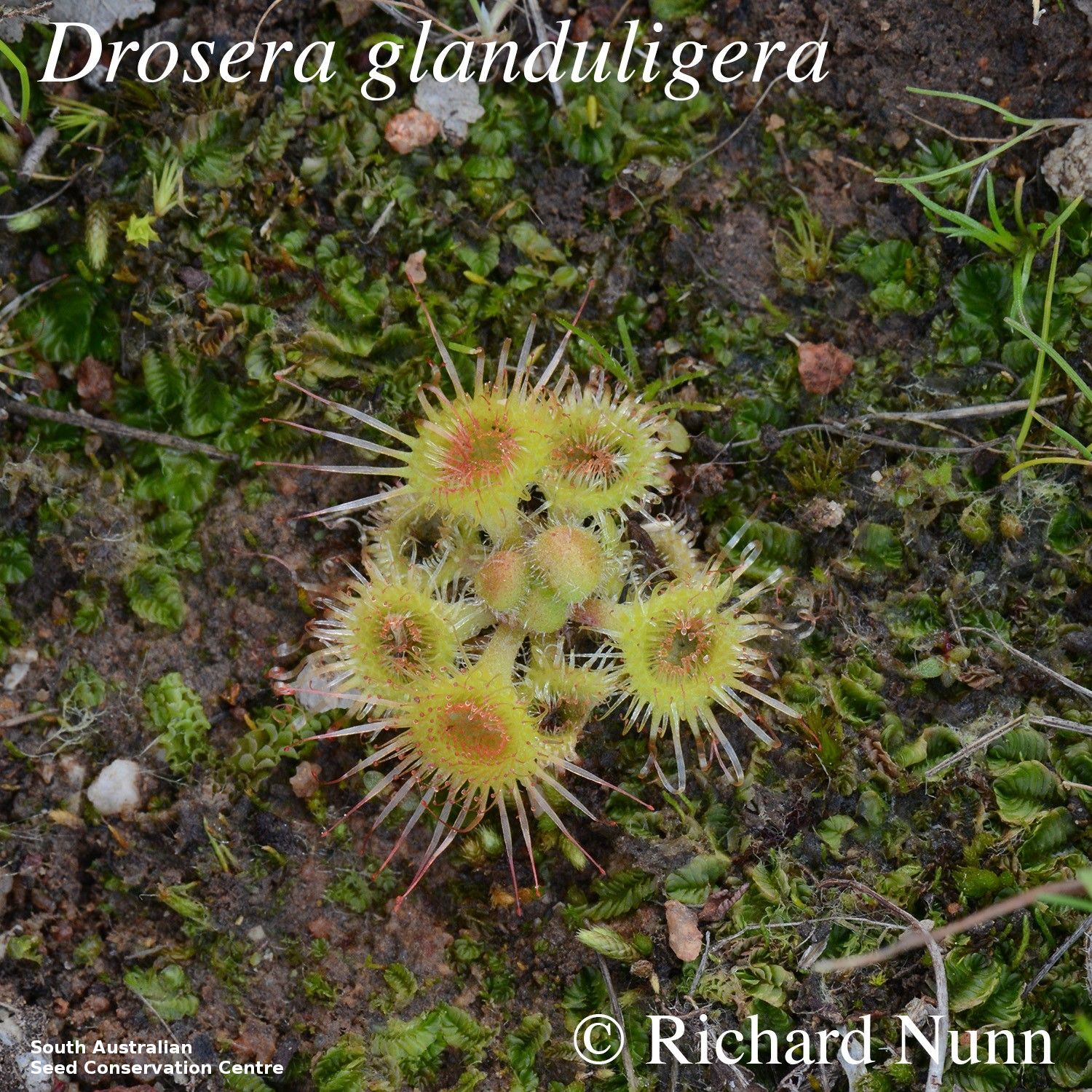
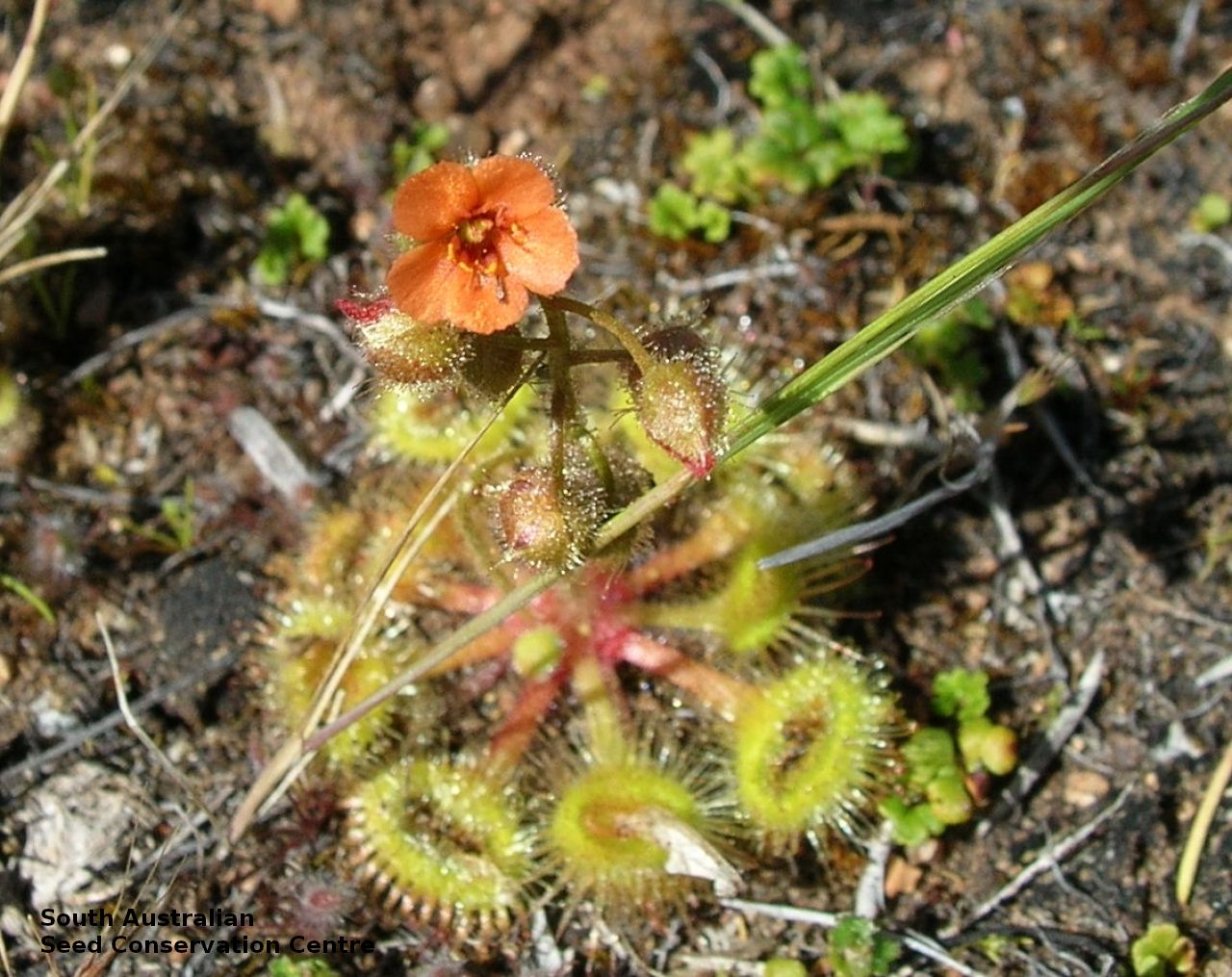
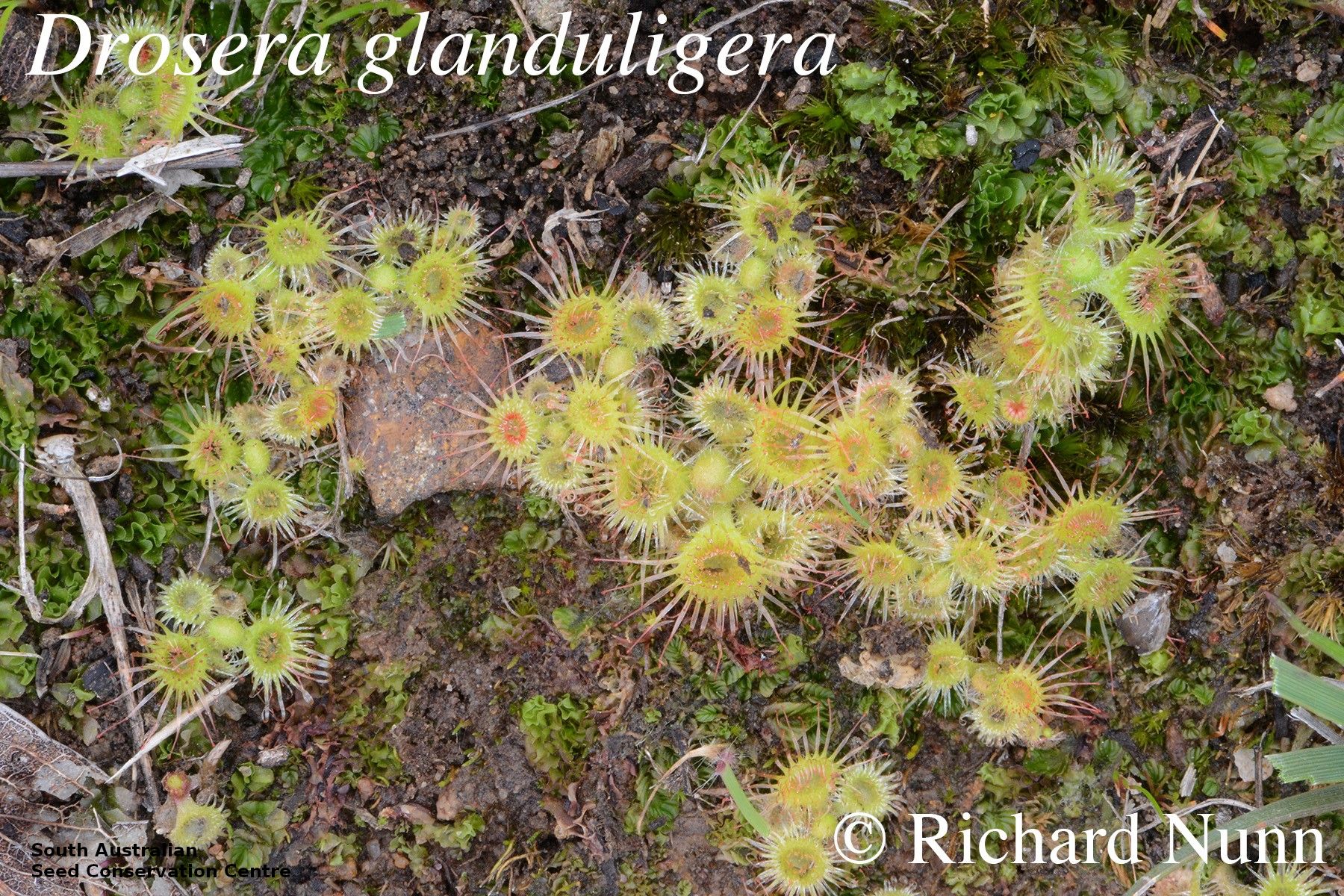
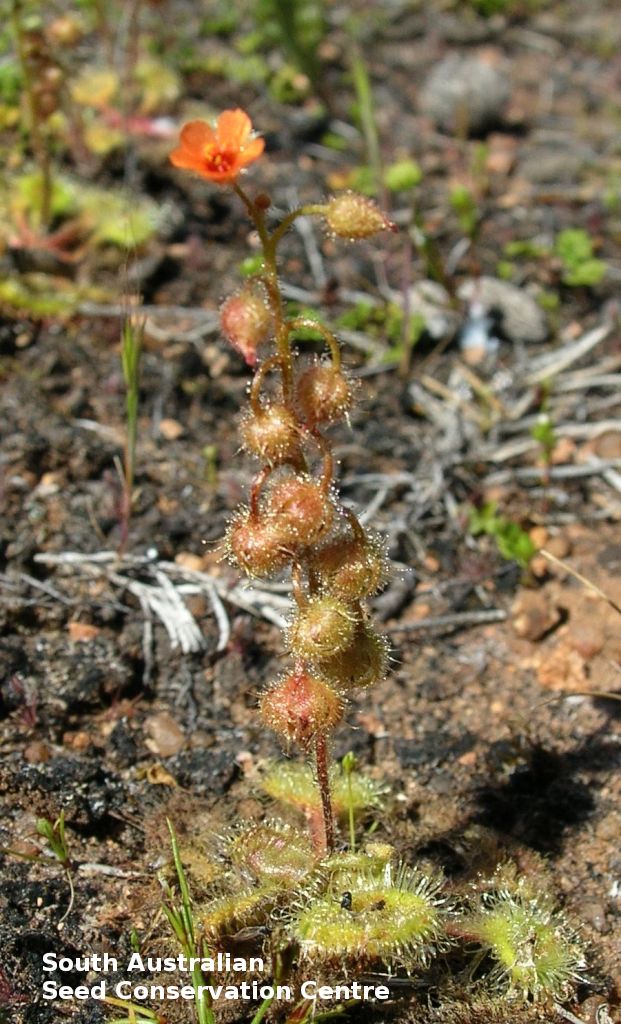
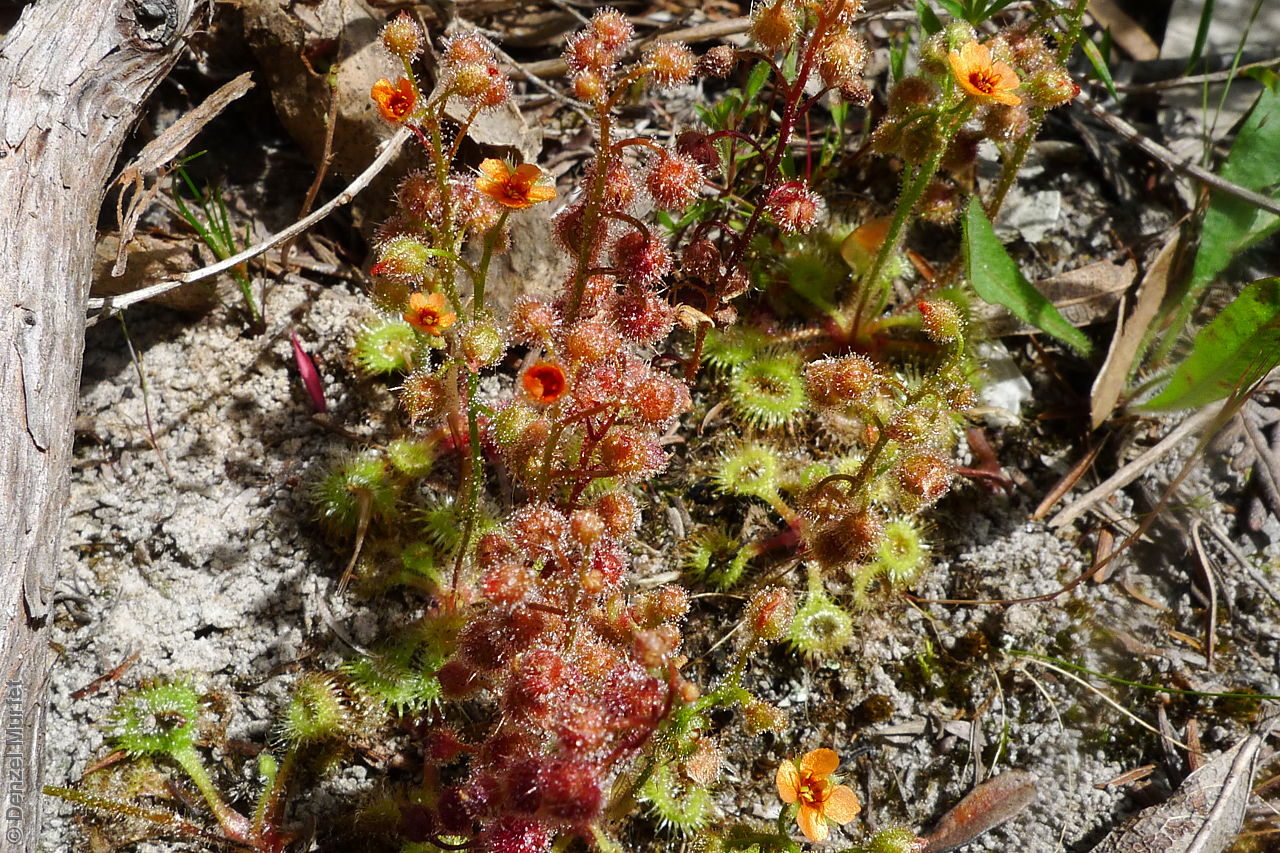
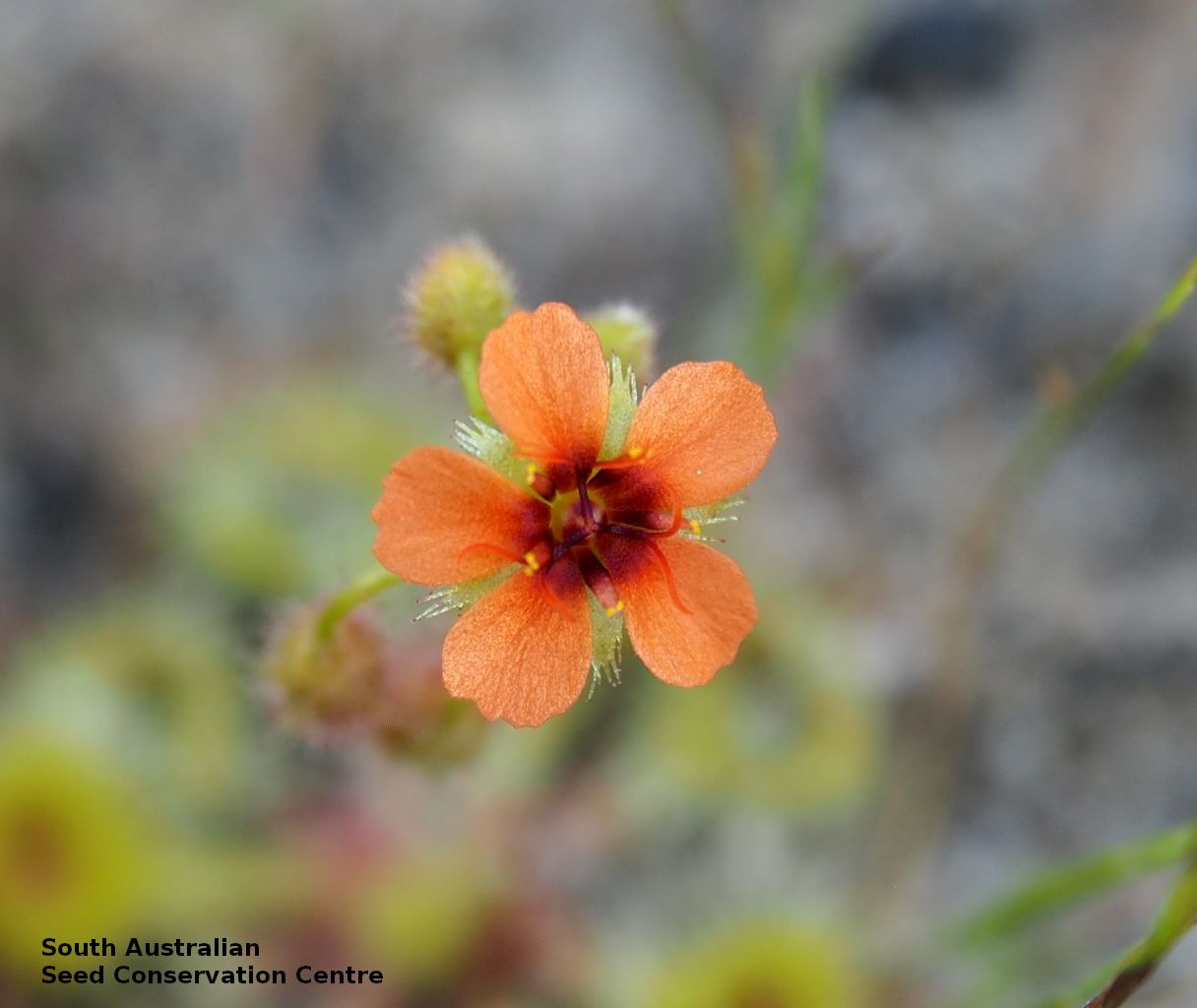
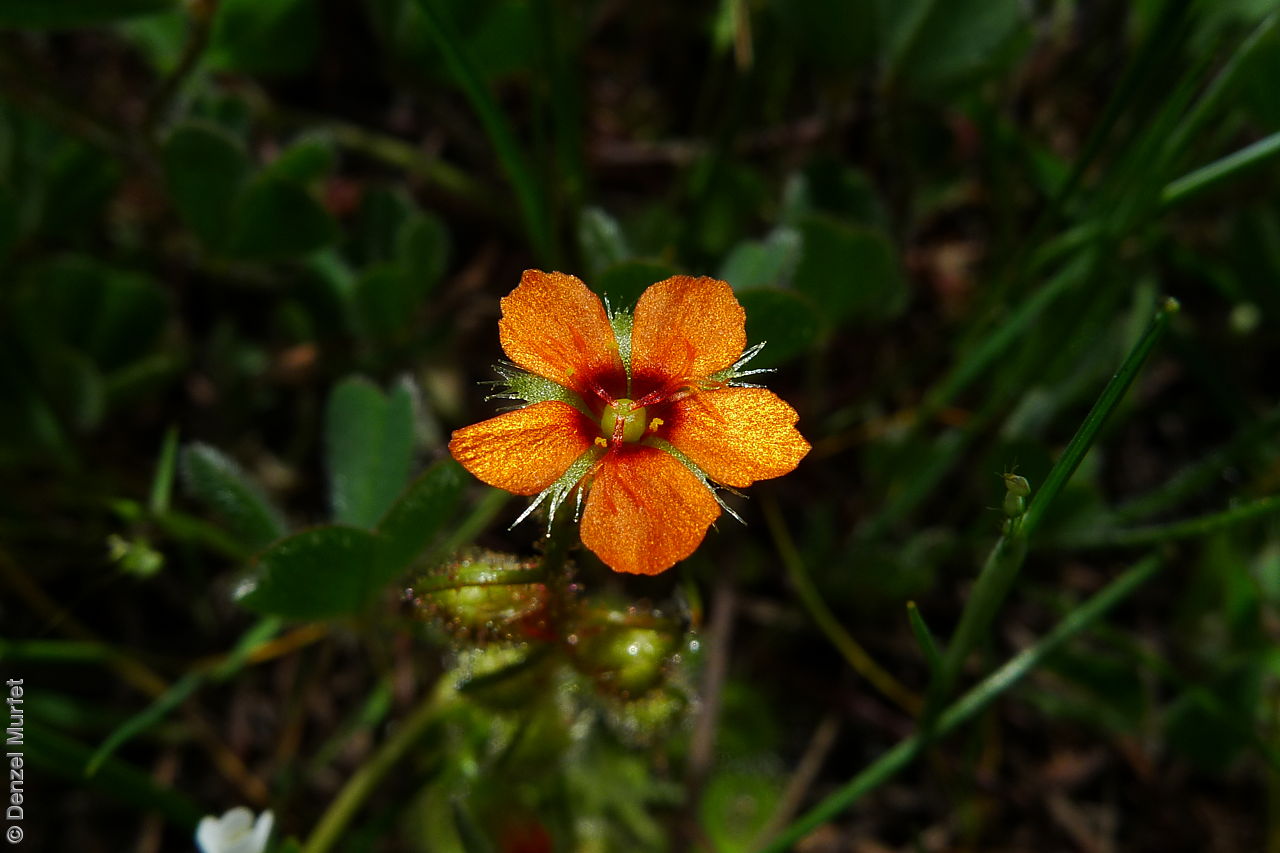
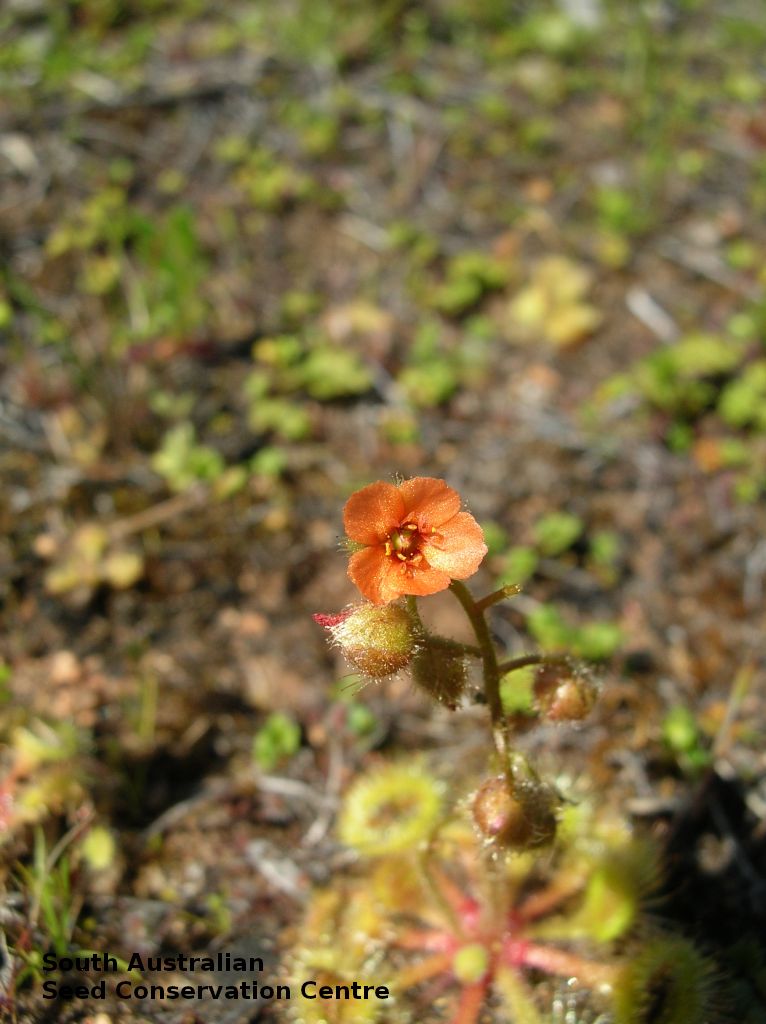
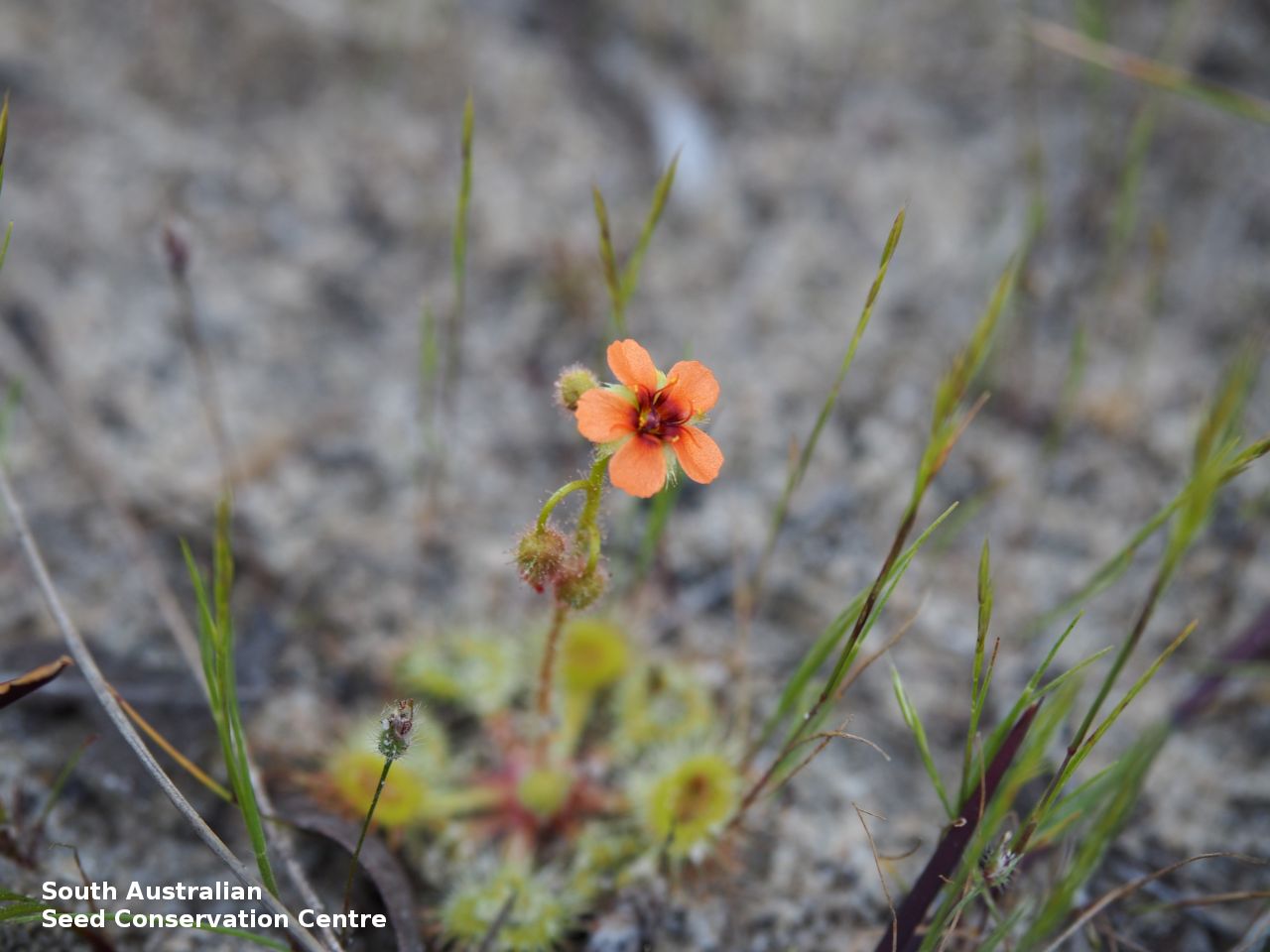
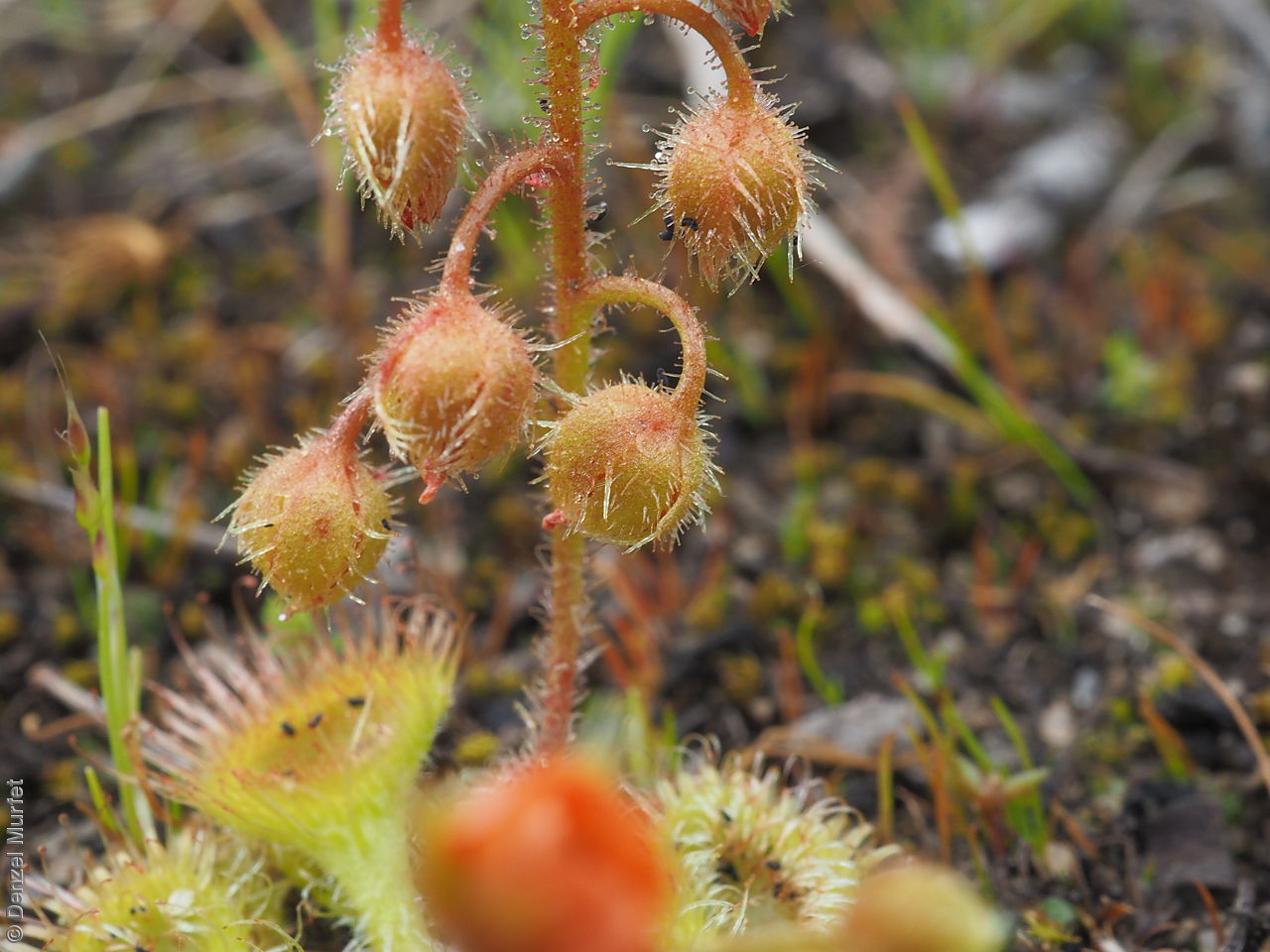
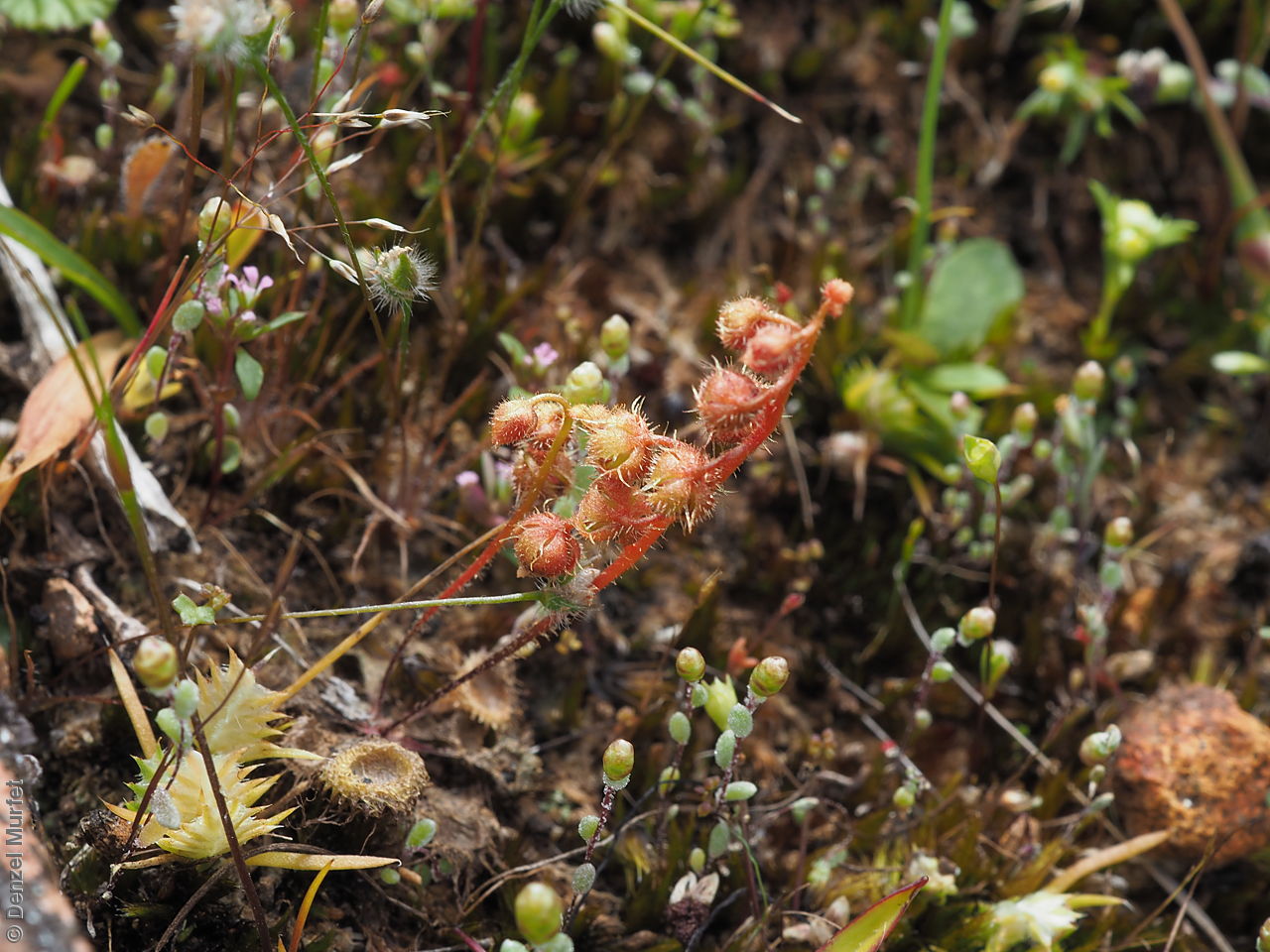
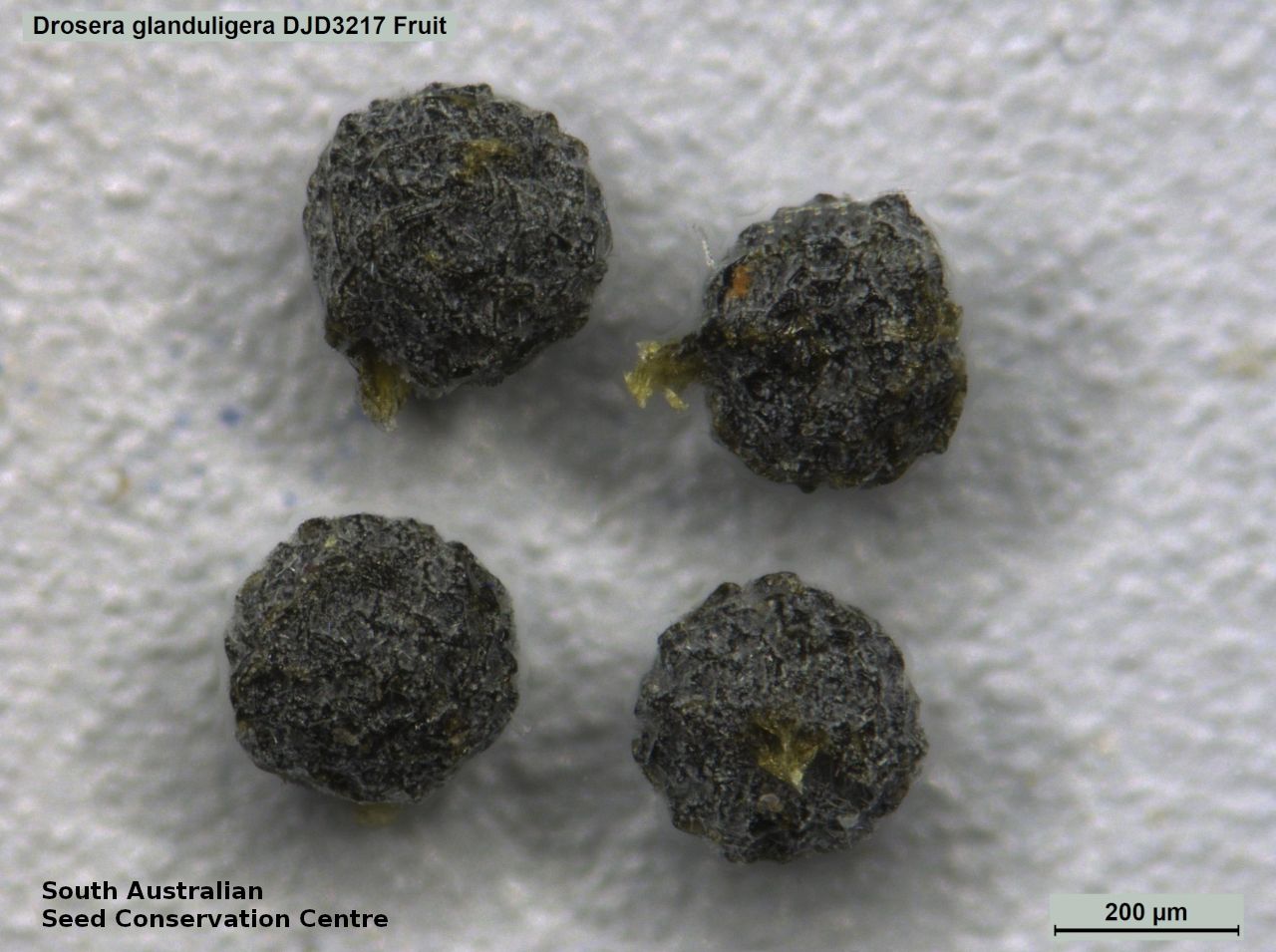
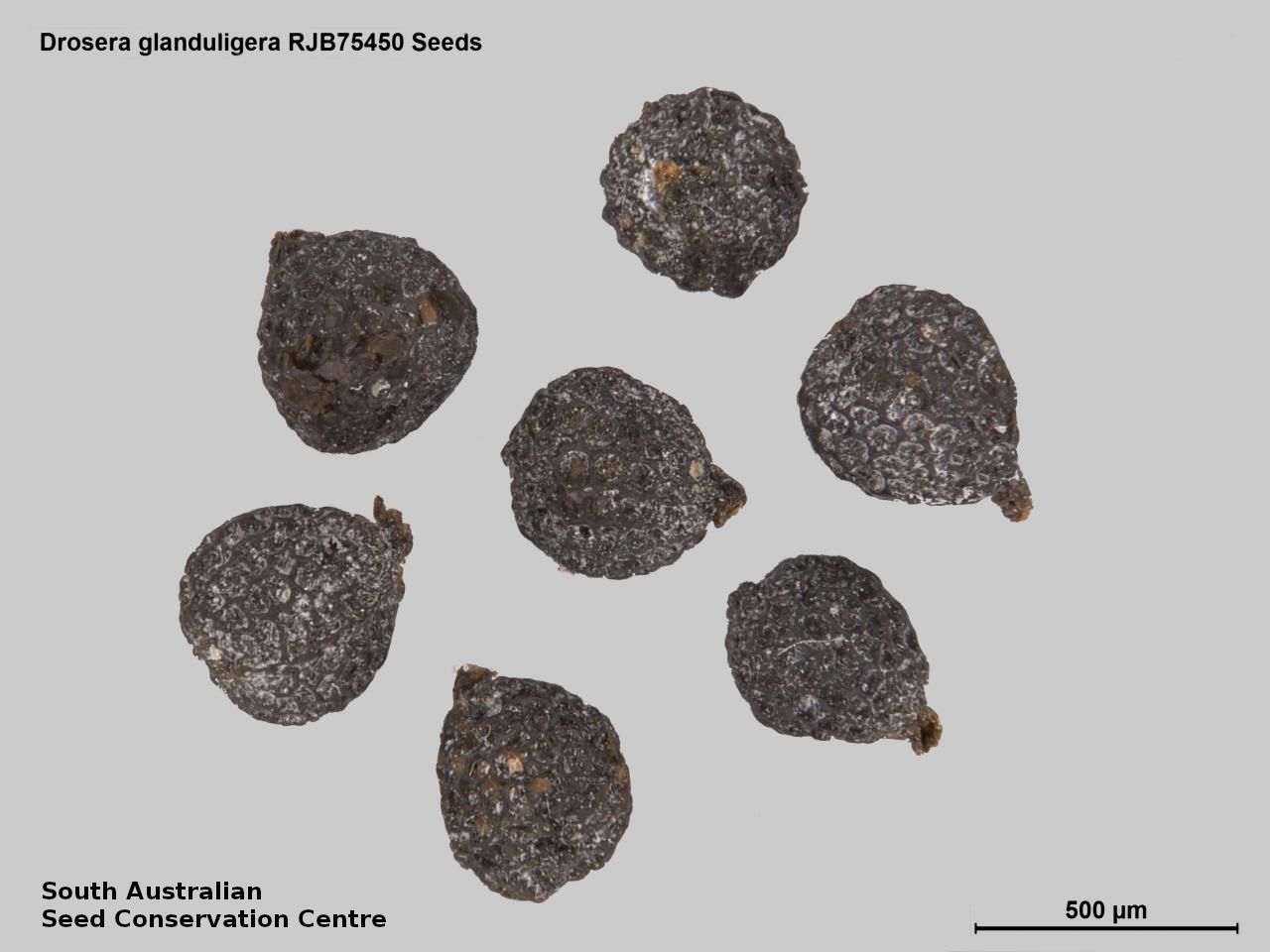
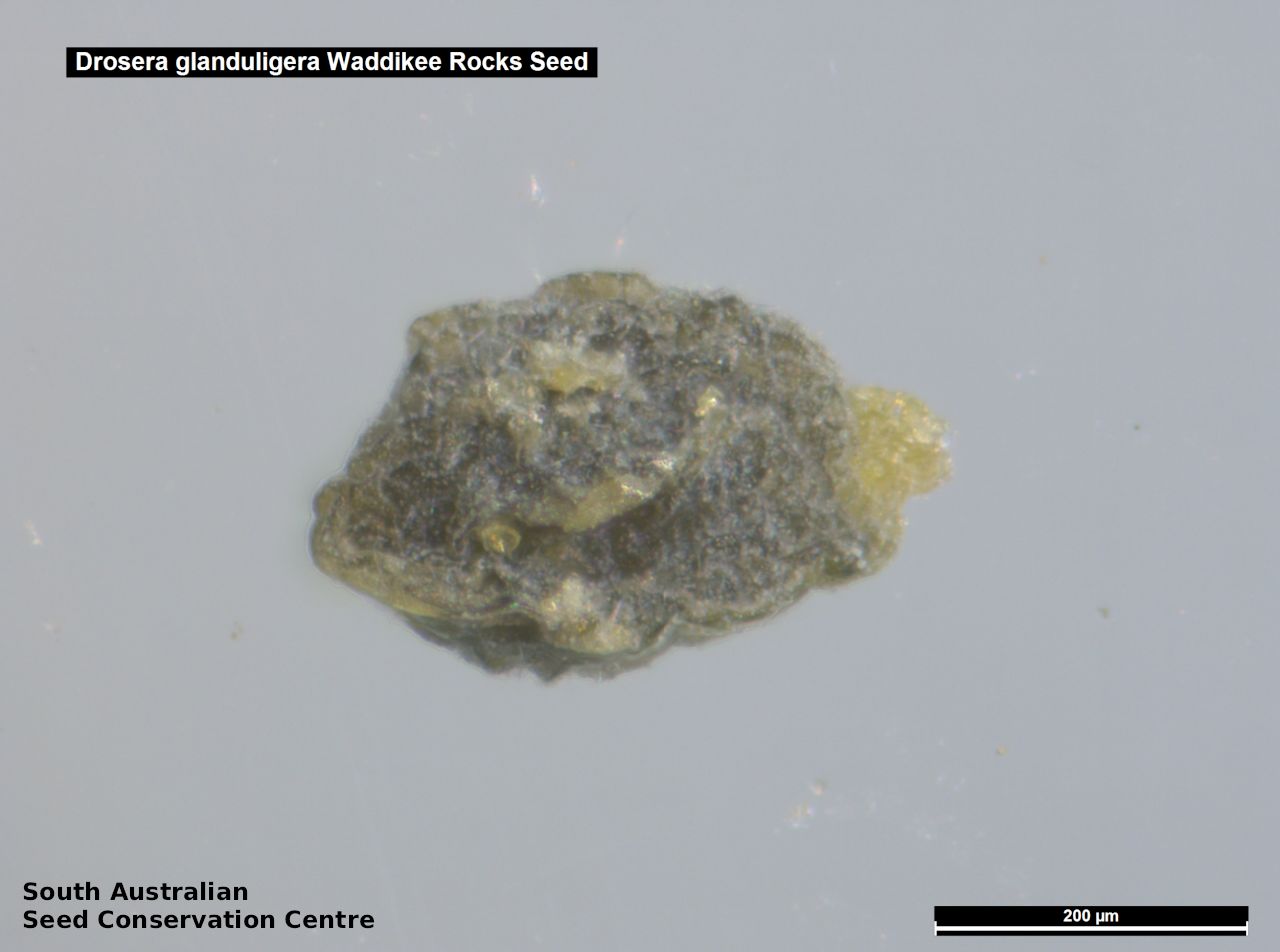
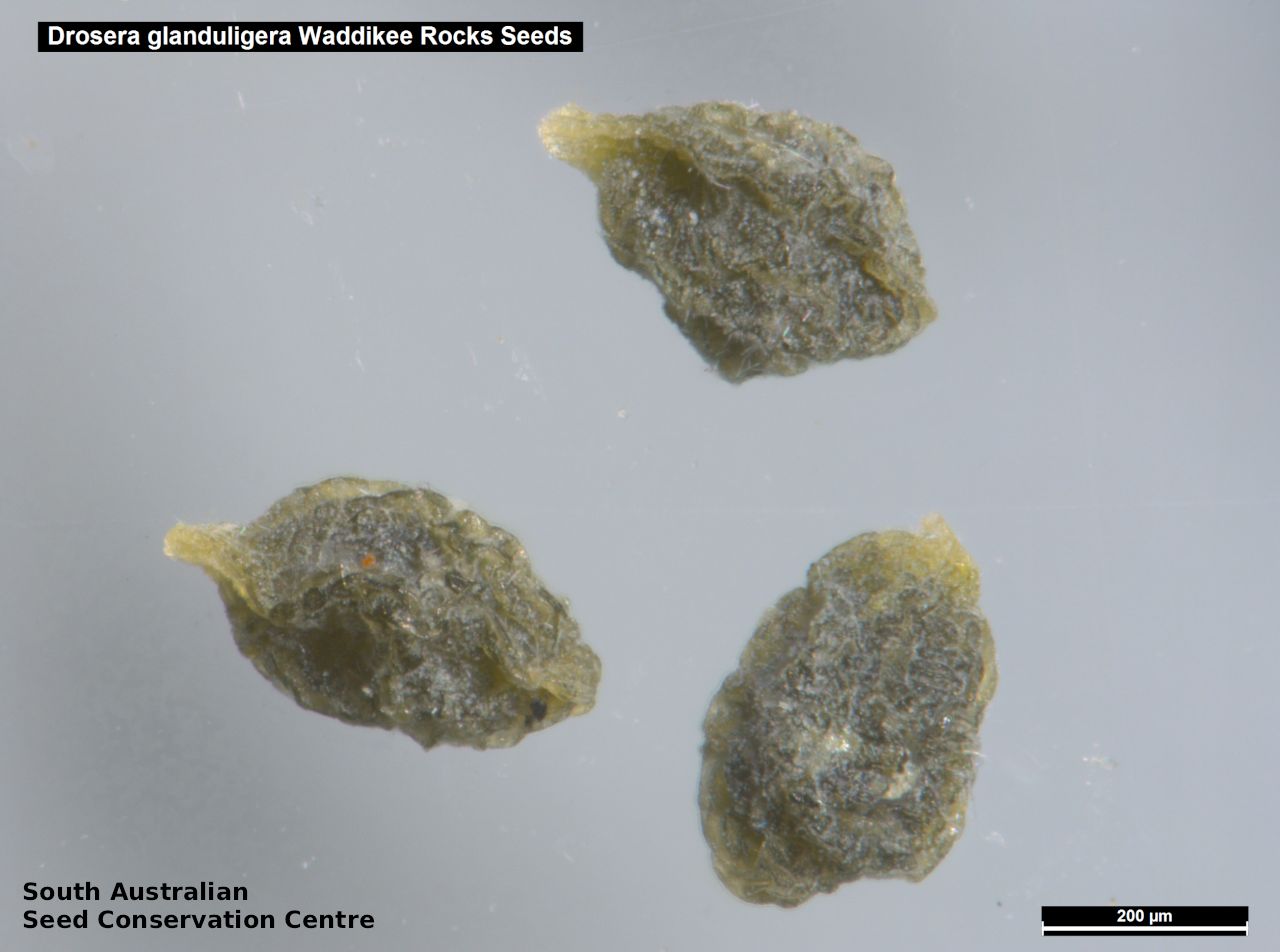

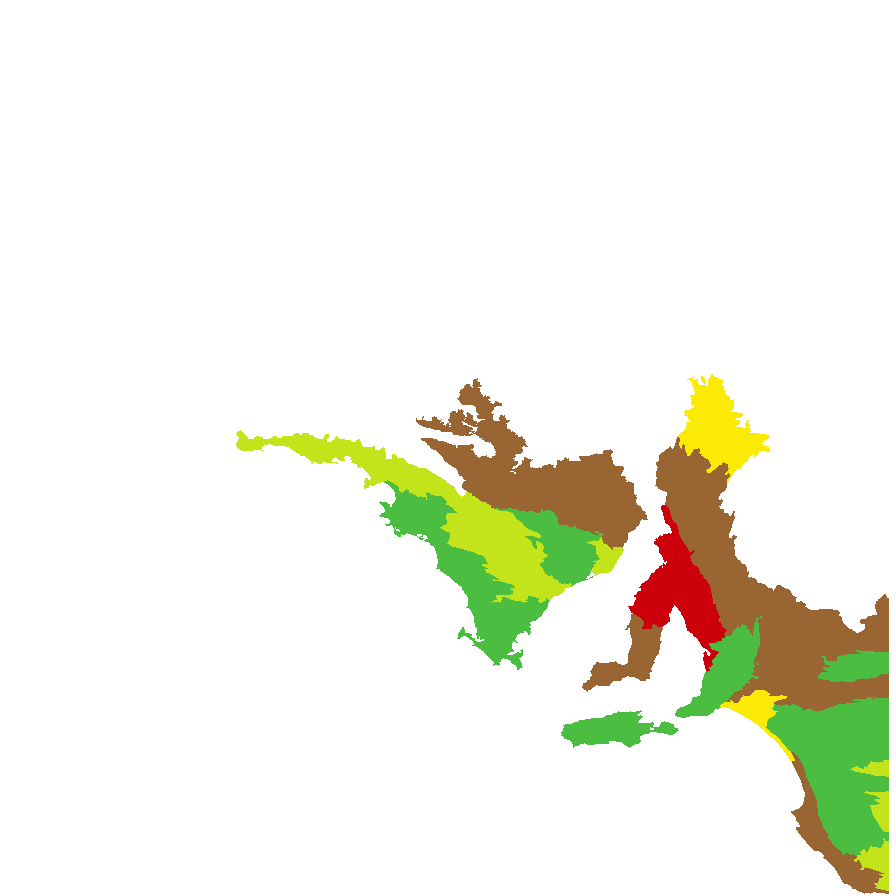
Botanical art
Etymology
Drosera from the Greek 'droseros' meaning dewy, alluding to the glistening hairs of the glandular leaf laminae. Glanduligera meaning gland-bearing, referring to the glandular scapes.
Distribution and status
Found across southern South Australia from the Flinders Ranges, Eyre Peninsula to the lower South-east growing in areas with temporary soil moisture during the cooler months. Also found in Western Australia, New South Wales, Victoria and Tasmania. Native. Common in South Australia. Uncommon in Tasmania. Common in the other States.
Herbarium regions: Flinders Ranges, Eyre Peninsula, Northern Lofty, Murray, Yorke Peninsula, Southern Lofty, Kangaroo Island, South Eastern, Green Adelaide
NRM regions: Adelaide and Mount Lofty Ranges, Eyre Peninsula, Kangaroo Island, Northern and Yorke, South Australian Arid Lands, South Australian Murray-Darling Basin, South East
AVH map: SA distribution map (external link)
Plant description
Ephemeral herb with short stems. Leaves in a convex rosette; lamina circular, very concave, to 12 mm diameter, abruptly narrowed to flat petiole to 8 mm long and 4 mm wide; stipules to 2 mm long, fused to base of petiole. Inflorescences 1–4, to 5 cm long; glandular, pedicels to 10 mm long, reflexed after flowering. Calyx to 5 mm long, deeply divided into ovate lobes; lobes laciniate. Petals to 5 mm long, orange or red. Flowering between August and November. Fruits are brown globose capsule to 4.5 mm diameter; finely reticulate, enclosed in densely hairy sepals. Seeds are black spheroidal seed to 0.4 mm diameter, with a warty surface.
Seed collection and propagation
Collect seeds between October and December. Collect mature capsules that are plump, hard, turning brown and contain black seeds. Place the capsules in a tray and leave to dry for one to two weeks. Then rub the capsules gently by hand to dislodge the seeds. Use a sieve to separate the unwanted material. Store the seeds with a desiccant such as dried silica beads or dry rice, in an air tight container in a cool and dry place. From one collection, the seed viability was high, at 100%.
| Location | No. of seeds (weight grams) | Number of plants | Date collected | Collection number Collection location | Date stored | % Viability | Storage temperature |
|---|---|---|---|---|---|---|---|
| BGA MSB | 46,000 (1.79 g) 46,000 (1.79 g) | 50 | 30-Oct-2007 | RJB75450 South Eastern | 19-Sep-2008 | 100% | -18°C |
Number of plants: This is the number of plants from which the seeds were collected.
Collection location: The Herbarium of South Australia's region name.
% Viability: Percentage of filled healthy seeds determined by a cut test or x-ray.